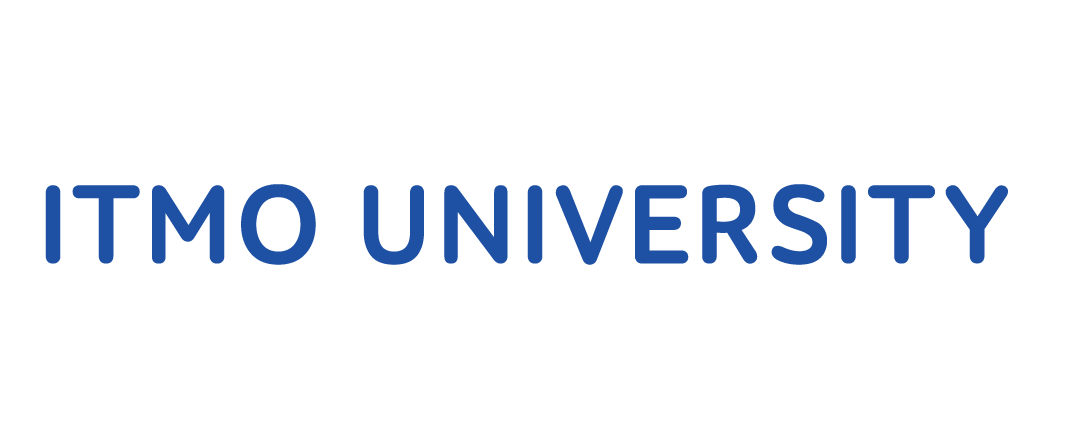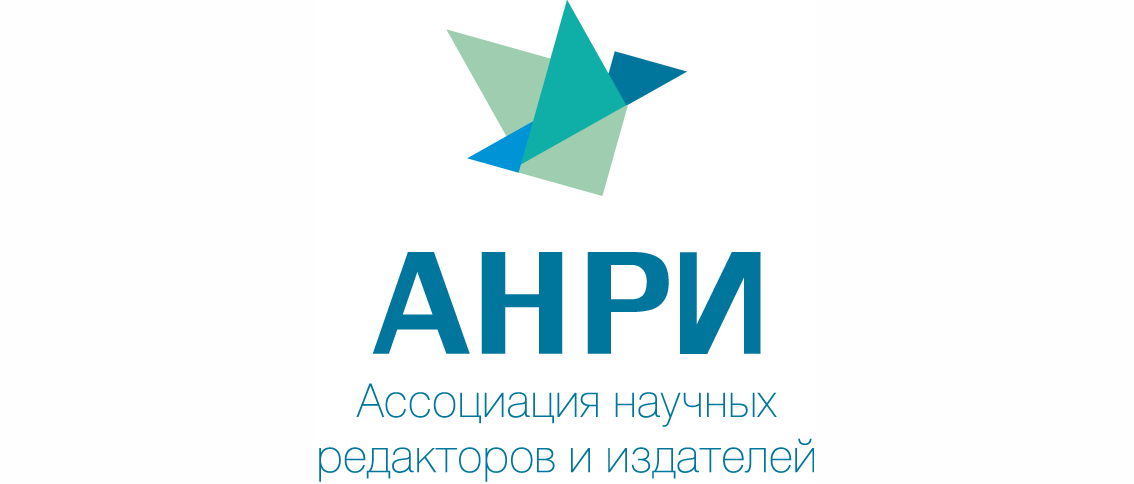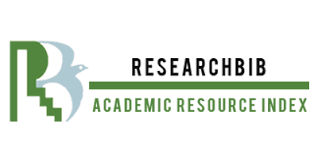
Nikiforov
Vladimir O.
D.Sc., Prof.
doi: 10.17586/2226-1494-2023-23-6-1084-1095
Luminescent dynamics of oxygen oxidation of Viburnum opulus L. in chitosan solutions with gold nanoparticles
Read the full article
For citation:
Abstract
The results of a study of the luminescent dynamics of combined aqueous-alcoholic solutions of extracts of red viburnum (Viburnum opulus L.) fruits with chitosan and gold nanoparticles at different oxygen concentrations were presented. The search for natural sources of photosensitizers is an urgent task. The sensitive analytical methods, in particular luminescence, with amplification of the analytical signal as a result of the generation of plasmons in nanoparticles of noble metals, have been used in this work. An additional studies under the conditions of plasmon energy generation showed a significant changes in the dynamics of optical spectra with variations in oxygen concentration in solutions. The spectral-temporal dynamics was investigated with complete oxidation of vitamin C in the studied system. The main method for recording the dynamics of interaction of Viburnum opulus L. flavonoids with oxygen molecules is the luminescent method. Luminescence spectra were measured by means of Fluorolog-3 optical system (Horiba, Japan). Methods of absorption analysis (Shimadzu spectrophotometer, Japan) were also used in the work. The nanosecond luminescence lifetimes of the extracts were measured in the multichannel photon counting mode using a picosecond NanoLED-405L nanoled by means of Fluorolog-3 spectral setup. Microsecond lifetimes were recorded when excited by a pulsed Xe lamp. For the synthesis of gold nanoparticles, the method of laser ablation of a metal plate of gold in distilled water was used. Laser ablation was performed at the LQ929 installation of Solar Laser System (Belarus). A plasmonic effect of amplification of the optical absorption density and luminescence intensity was detected. The kinetics of luminescence quenching of Viburnum opulus L. extract with chitosan under the influence of gold nanoparticles, close to diffusion, was studied. The oxygen concentration at which the flavonoids of the extract are oxidized was spectrally determined. Under the oxygen concentration changing, the dependences of changes in the luminescence intensity of the extract with chitosan at the wavelengths of registration of luminescence spectra were established. When oxygen was doped into all solutions, the spectral and kinetic features of luminescence attenuation with maxima at wavelengths of 480 and 580 nm were detected and investigated. It was established that the lifetime of luminescence at a registration wavelength of λ = 480 nm varies depending on the concentration of gold nanoparticles and the concentration of oxygen molecules and it is the nanosecond spectral region (3–4 ns). It was shown that luminescence at a wavelength of 580 nm is due to the oxidized form of quercetin which is a part of the Viburnum opulus L. flavonoids, appeared at a high oxygen concentrations. Long-lived chemiluminescence at a wavelength of 580 nm with time decay of 15 μs as a result of radical processes involving molecular oxygen and extract molecules was recorded. The spectral methods presented in this paper, as well as a method for determining of quercetin as a result of oxygen oxidation of flavonoids of red viburnum fruits, can be used in the field of biophysics, biotechnology and chemical analysis.
Acknowledgements. The presented study was carried out within the framework of the Federal Project of the Ministry of Education and Science of the Russian Federation (Project No. FZWM-2020-0003 “Research of new materials and methods of plasma and phototherapy of oncological diseases, dermatitis and septic complications”).
References
- Makhadmeh G.N., Abuelsamen A., Al-Akhras M-A.H., Aziz A.A. Silica nanoparticles encapsulated cichorium pumilum as a promising photosensitizer for osteosarcoma photodynamic therapy: In-vitro study. Photodiagnosis and Photodynamic Therapy, 2022, vol. 38, pp. 102801. https://doi.org/10.1016/j.pdpdt.2022.102801
- Chiode M.M.M., Colonello G.P., Kabadayan F., Silva J.D.S., Suffredini I.B., Saraceni C.H.C. Plant extract incorporated into glass ionomer cement as a photosensitizing agent for antimicrobial photodynamic therapy on Streptococcus mutans. Photodiagnosis and Photodynamic Therapy, 2022, vol. 38, pp. 102788. https://doi.org/10.1016/j.pdpdt.2022.102788
- Sarker M.A.R., Ahn Y.-H. Strategic insight into enhanced photocatalytic remediation of pharmaceutical contaminants using spherical CdO nanoparticles in visible light region. Chemosphere, 2023, vol. 311, part 1, pp. 137040. https://doi.org/10.1016/j.chemosphere.2022.137040
- Huang W.H., Zhang Q.W., Yuan C.S., Wang C.Z., Li S.P., Zhou H.H. Chemical constituents of the plants from the genus Oplopanax. Chemistry & Biodiversity, 2014, vol. 11, no. 2, pp. 181–196. https://doi.org/10.1002/cbdv.201200306
- Zakłos-Szyda M., Pawlik N. The influence of viburnum opulus polyphenolic compounds on metabolic activity and migration of hela and mcf cells. Acta Innovations, 2019, vol. 31, pp. 33–42. https://doi.org/10.32933/ActaInnovations.31.4
- Bina F., Soleymani S., Toliat T., Hajimahmoodi M., Tabarrai M., Abdollahi M., Rahimi R. Plant-derived medicines for treatment of endometriosis: A comprehensive review of molecular mechanisms. Pharmacological Research, 2019, vol. 139, pp. 76–90. https://doi.org/10.1016/j.phrs.2018.11.008
- Ozkan G., Kostka T., Dräger G., Capanoglu E., Esatbeyoglu T. Bioaccessibility and transepithelial transportation of cranberrybush (Viburnum Opulus) phenolics: Effects of non-thermal processing and food matrix. Food Chemistry, 2022, vol. 380, pp. 132036. https://doi.org/10.1016/j.foodchem.2021.132036
- Kajszczak D., Zakłos-Szyda M., Podsędek A. Viburnum Opulus L.—A review of phytochemistry and biological effects. Nutrients, 2020, vol. 12, no. 11, pp. 3398. https://doi.org/10.3390/nu12113398
- Khalaf M.Z., Hassan B.H., Shbar A.K., Naher F.H., Salman A.H., Jabo N.F. Current status of population density of mediterranean fruit fly (Ceratitis Capitata) in fruit orchards in Central Iraq. Journal of Agricultural Science and Technology, 2011, pp. 773–777.
- Saltan G., Süntar I., Ozbilgin S., Ilhan M., Demirel M.A., Oz B.E., Keleş H., Akkol E.K. Viburnum opulus L.: A remedy for the treatment of endometriosis demonstrated by rat model of surgically-induced endometriosis. Journal of Ethnopharmacology, 2016, vol. 193, pp. 450–455. https://doi.org/10.1016/j.jep.2016.09.029
- Perova I.B., Zhogova A.A., Cherkashin A.V., Éller K.I., Ramenskaya G.V., Samylina I.A. Biologically active substances from european guelder berry fruits. Pharmaceutical Chemistry Journal, 2014, vol. 48, no. 5, pp. 332–339. https://doi.org/10.1007/s11094-014-1105-8
- Qiu S., Zhou S., Tan Y., Feng J., Bai Y., He J., Cao H., Che Q., Guo J., Su Z. Biodegradation and prospect of polysaccharide from crustaceans. Marine Drugs, 2022, vol. 20, no. 5, pp. 310. https://doi.org/10.3390/md20050310
- Skryabin K.G., Mikhailova S.N. Chitosan: Collection of articles. Nuclear Physics, 2013, vol. 13, pp. 104–116.
- Shi Z., Neoh K.G., Kang E.T., Wang W. Antibacterial and Mechanical properties of bone cement impregnated with chitosan nanoparticles. Biomaterials, 2006, vol. 27, no. 11, pp. 2440–2449. https://doi.org/10.1016/j.biomaterials.2005.11.036
- Fernandes J.C., Tavaria F.K., Soares J.C., Ramos Ó.S., João Monteiro M., Pintado M.E., Xavier Malcata F. Antimicrobial effects of chitosans and chitooligosaccharides, upon Staphylococcus aureus and Escherichia coli, in food model systems. Food Microbiology, 2008, vol. 25, no. 7, pp. 922–928. https://doi.org/10.1016/j.fm.2008.05.003
- Dydykina V.N., Eremina Yu.D., Koryagin A.S., Smirnov V.P., Smirnova L.A. Influence of nanostructures systems of "chitosan-gold nanoparticles", "chitosan-apitoxin-gold nanoparticles" on the structure and mass of the tumor, peroxidation of lipids and functional state of rats having RS-1 tumor. Medicinskij alʹmanah, 2016, no. 2(42), pp. 133–137. (in Russian)
- Tyukova I.S., Safronov A.P., Kotel’nikova A.P., Agalakova D.Y. Electrostatic and steric mechanisms of iron oxide nanoparticle sol stabilization by chitosan. Polymer Science Series A, 2014, vol. 56, no. 4, pp. 498–504. https://doi.org/10.1134/S0965545X14040178
- Abilova G.K., Makhayeva D.N., Irmukhametova G.S., Khutoryanskiy V.V. Chitosan based hydrogels and their use in medicine. Chemical Bulletin of Kazakh National University, 2020, vol. 97, no. 2, pp. 16–28. (in Russian). https://doi.org/10.15328/cb1100
- Iordansky A.L., Rogovina S.Z., Kosenko R.Y., Ivantsova E.L., Prut E.V. Development of a biodegradable polyhydroxybutyrate-chitosan-rifampicin composition for controlled transport of biologically active compounds. Doklady Physical Chemistry, 2010, vol. 431, no 2, pp. 60⎯62. https://doi.org/10.1134/S0012501610040020
- Agabekov V., Kulikouskaya V., Hileuskaya K., Dubatouka K. Nano- and microcontainers for the biologically active substances delivery. Nauka i innovacii, 2017, no. 4, pp. 16⎯19. (in Russian)
- Polyudova T.V., Korobov V.P., Shagdarova B.T., Varlamov V.P. Bacterial adhesion and biofilm formation in the presence of chitosan and its derivatives. Microbiology, 2019, vol. 88, no. 2, pp. 125⎯131. https://doi.org/10.1134/S0026261719020085
- Ahmad N., Muhammad J., Khan K., Ali W., Fazal H., Ali M., Rahman L., Khan H., Uddin M.N., Abbasi B.H., Hano C. Silver and gold nanoparticles induced differential antimicrobial potential in calli cultures of Prunella vulgaris. BMC Chemistry, 2022, vol. 16, pp. 20. https://doi.org/10.1186/s13065-022-00816-y
- Dykman L., Khlebtsov N. Gold nanoparticles in biomedical applications: recent advances and perspectives. Chemical Society Reviews, 2012, vol. 41, no. 6, pp. 2256–2282. https://doi.org/10.1039/c1cs15166e
- Gladkova E.V., Babushkina I.V., Belova S.V., Mamonova I.A., Karyakina E.V., Konjuchenko E.A. Capabilities of use of chitosan and metal nanoparticles in regeneration of experimental wounds. Fundamental Research, 2013, no. 7-3, pp. 530–533. (in Russian)
- Rakhmetova A.A., Bogoslovskaya O.A., Olkhovskaya I.P., Zhigach A.N., Ilyina A.V., Varlamov V.P., Gluschenko N.N. Concomitant action of organic and inorganic nanoparticles in wound healing and antibacterial resistance: Chitosan and copper nanoparticles in an ointment as an example. Nanotechnologies in Russia, 2015, vol. 10, no. 1-2, pp. 149–157. https://doi.org/10.1134/s1995078015010164
- Pérez-Díaz M.A., Prado-Prone G., Díaz-Ballesteros A., González-Torres M., Silva-Bermudez P., Sánchez-Sánchez R. Nanoparticle and nanomaterial involvement during the wound healing process: an update in the field. Journal of Nanoparticle Research, 2023, vol. 25, pp. 27. https://doi.org/10.1007/s11051-023-05675-9
- Rubina M.S., Elmanovich I.V., Shulenina A.V., Peters G.S., Svetogorov R.D., Egorov A.A., Naumkin A.V., Vasil’kov A.Y. Chitosan aerogel containing silver nanoparticles: from metal-chitosan powder to porous material. Polymer Testing, 2020, vol. 86, pp. 106481. https://doi.org/10.1016/j.polymertesting.2020.106481
- Raik S.V., Gasilova E.R., Dobrodumov A.V., Skorik Y.A. Study of structure and physico-chemical properties of reaction products of chitosan and N-(2-chloroethyl)-N,N-diethylamine. Proceedings of the RAS Ufa Scientific Centre, 2018, no. 3(2), pp. 75–79. (in Russian). https://doi.org/10.31040/2222-8349-2018-2-3-75-79
- Özdemir S., Karaküçük A., Çakırlı E., Sürücü B., Üner B., Barak T.H., Bardakçı H. Development and characterization of Viburnum opulus l. extract-loaded orodispersible films: potential route of administration for phytochemicals. Journal of Pharmaceutical Innovation, 2023, vol. 18, no. 1, pp. 90–101. https://doi.org/10.1007/s12247-022-09627-z
- Popletaeva S.B., Arslanova L.R. Use of Chitosan nanoparticles loaded with biologically active substances for pre-harvest plant protection from pathogens (a review). Journal of Physics: Conference Series, 2021, vol. 1942, pp. 012077. https://doi.org/10.1088/1742-6596/1942/1/012077
- Bratu D.C., Pop S.I., Balan R., Dudescu M., Petrescu H.P., Popa G. Effect of different artificial saliva on the mechanical properties of orthodontic elastomers ligatures. Materiale Plastice, 2013, vol. 50, no. 1, pp. 49–52.
- Mocanu G., Nichifor M., Mihai D., Oproiu L.C. Bioactive cotton fabrics containing chitosan and biologically active substances extracted from plants. Materials Science and Engineering: C, 2013, vol. 33, mo. 1, pp. 72–77. https://doi.org/10.1016/j.msec.2012.08.007
- Rahman A., Goswami T., Tyagi N., Ghosh H.N., Neelakandan P.P. Hot electron migration from gold nanoparticle to an organic molecule enhances luminescence and photosensitization properties of a pH activatable plasmon-molecule coupled nanocomposite. Journal of Photochemistry & Photobiology A: Chemistry, 2022, vol. 432, pp. 114067. https://doi.org/10.1016/j.jphotochem.2022.114067
- Ge M., Liu S., Li J., Li M., Li S., James T.D., Chen Z. Luminescent materials derived from biomass resources. Coordination Chemistry Reviews, 2023, vol. 477, pp. 214951. https://doi.org/10.1016/j.ccr.2022.214951
- Beltyukova S.V., Stepanova A.A., Liventsova E.O. Antioxidants in food products and methods of their determination. Vіsnik ONU. Hіmіja, 2014, vol. 19, no. 4, pp. 16–30. (in Russian)
- Bondarev S.L., Knyukshto V.N., Tikhomirov S.A., Buganov O.V., Pyrko A.N. Photodynamics of intramolecular proton transfer in polar and nonpolar biflavonoid solutions. Optics and Spectroscopy. 2012, vol. 113, no. 4, pp. 401–410. https://doi.org/10.1134/s0030400x12070065
- Zenkevich I.G., Pushkareva T.I. On the modeling the formation of flavonoid oxidation dimeric products. Chemistry of Plant Raw Material, 2018, no. 3, pp. 185–197. (in Russian). https://doi.org/10.14258/jcprm.2018033589
- Tcibulnikova A., Zemliakova E., Artamonov D., Slezhkin V., Skrypnik L., Samusev I., Zyubin A., Khankaev A., Bryukhanov V., Lyatun I. Photonics of Viburnum opulus L. extracts in microemulsions with oxygen and gold nanoparticles. Chemosensors, 2022, vol. 10, no. 4, pp. 130. https://doi.org/10.3390/chemosensors10040130
- Tcibulnikova A., Zemlyakova E., Slezhkin V., Samusev I.G., Bryukhanov V.V., Khankaev A., Artamonov D. Spectroscopy of triplet-excited complexes of oxygen with spruce cone molecules extract from picea abies in AOT micelles under combined photoexcitation. Journal of Molecular Structure, 2022, vol. 1259, pp. 132661. https://doi.org/10.1016/j.molstruc.2022.132661
- Zemlyakova E.S., Tcibulnikova A.V., Slezhkin V.A., Zyubin A.Yu., Samusev I.G., Bryukhanov V.V. The infrared spectroscopy of chitosan films doped with silver and gold nanoparticles. Journal of Polymer Engineering, 2019, vol. 39, no. 5, pp. 415–421. https://doi.org/10.1515/polyeng-2018-0356
- Tcibulnikova A.V., Degterev I.A., Bryukhanov V.V., Roberto M.M., Campos Pereira F.D., Marin-Morales M.A., Slezhkin V.A., Samusev I.G. The participation of singlet oxygen in a photocitotoxicity of extract from amazon plant to cancer cells. Proceedings of SPIE, 2018, vol. 10456, pp. 104563E. https://doi.org/10.1117/12.2283317
- Deineka V.I., Kul’chenko Y.Y., Blinova I.P., Chulkov A.N., Deineka L.A. Anthocyanins of basil leaves: Determination and preparation of dried encapsulated forms. Russian Journal of Bioorganic Chemistry, 2019, vol. 45, pp. 895–899. https://doi.org/10.1134/S1068162019070021
- Nagai S., Ohara K., Mukai K. Kinetic study of the quenching reaction of singlet oxygen by flavonoids in ethanol solution. Journal of Physical Chemistry B, 2005, vol. 109, no. 9, pp. 4234–4240. https://doi.org/10.1021/jp0451389
- Shraim A.M., Ahmed T.A., Rahman M.M., Hijji Y.M. Determination of Total flavonoid content by aluminum chloride assay: A critical evaluation. LWT, 2021, vol. 150, pp. 111932. https://doi.org/10.1016/j.lwt.2021.111932
- Guo Y., Qu Y., Yu J., Song L., Chen S., Qin Z., Gong J., Zhan H., Gao Y., Zhang J. A chitosan-vitamin c based injectable hydrogel improves cell survival under oxidative stress. International Journal of Biological Macromolecules, 2022, vol. 202, pp. 102–111. https://doi.org/10.1016/j.ijbiomac.2022.01.030
- Pushkareva T.I., Zenkevich I.G. Chromato-mass spectrometric identification of products of quercetin oxidation by atmospheric oxygen in aqueous solutions. Vestnik SPbSU. Physics and Chemistry, 2017, vol. 4, no. 1, pp. 59–79. (in Rusian). https://doi.org/10.21638/11701/spbu04.2017.107
- Fuentes J., Atala E., Pastene E., Carrasco-Pozo C., Speisky H. Quercetin oxidation paradoxically enhances its antioxidant and cytoprotective properties. Journal of Agricultural and Food Chemistry, 2017, vol. 65, no. 50, pp. 11002–11010. https://doi.org/10.1021/acs.jafc.7b05214
























